Intentar ORO - Gratis
Understanding Diatomaceous Earth
The Gardener
|November 2017
Do away with bugs the natural way.

In this day and age of environmental awareness, many of us are looking for more environmentally friendly approaches to pest control, rather than resorting to the use of broad spectrum insecticides, which are as toxic to beneficial insects as they are pest species. One of the alternatives is diatomaceous earth.
Diatomaceous earth (DE) was first sold as a natural pesticide back in 1960. Its advantage over other forms of pest control is that it is an entirely natural, easy-to-use product. It has no impact on the environment and is harmless to most higher life forms. Furthermore, as DE is a natural substance, insects cannot build up resistance to it.
Definition
Despite its name, DE is not a soil but a naturally occurring rock comprising of the fossilised remains of single-celled, algae-like plants called diatoms. Diatoms still exist today and are one of the most common forms of phytoplankton found in water, but those from which DE is manufactured existed millions of years ago. As the great lakes dried up, the skeletons of these diatoms (which consist of 33% silicon, 19% calcium, 5% sodium, 3% magnesium, 2% iron, plus other trace elements) left behind deposits called diatomite. When we mine this the product is a chalk-like product.

How does it work?
Esta historia es de la edición November 2017 de The Gardener.
Suscríbete a Magzter GOLD para acceder a miles de historias premium seleccionadas y a más de 9000 revistas y periódicos.
¿Ya eres suscriptor? Iniciar sesión
MÁS HISTORIAS DE The Gardener

The Gardener
Preserving apples
The end of the apple season means that apples need to be preserved for the next six months until the next harvest is ready.
3 mins
July/August 2025
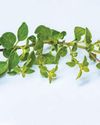
The Gardener
Golden Oregano
Origanum vulgare ‘Aureum’, as its name suggests, is golden yellow in full sun and cool weather. These bright herbs are highly fragrant, with a classic oregano taste and aroma, and are often used in the kitchen for pasta and pizza. In summer, the yellow leaves will be covered with small pink and purple flowers.
1 min
July/August 2025
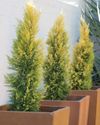
The Gardener
Potting up a conifer
Conifers generally are well-behaved plants with interesting, evergreen foliage and mostly formal and neat growth habits. This makes them stately candidates for roomy containers.
1 mins
July/August 2025
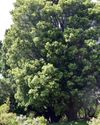
The Gardener
Enduring and venerable trees
There cannot ever be a good reason not to plant a tree, and somewhere there is just the right tree for you...
3 mins
July/August 2025
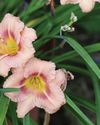
The Gardener
Daylilies make a comeback
Daylilies are making a comeback in 2025 with even more shapes, twists, ruffles, pleats, picotees, curves, and stunning colours and colour combinations. There are singles and doubles, big and small flowers, each unique, and yes, they only last a day! They do, however, have another flower bud just behind that one, ready to show off the next day.
1 min
July/August 2025
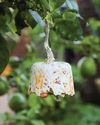
The Gardener
How to make a fat ball
Some birds love a fat ball in winter to boost their energy levels. These are easy to make and a fun project to do with the kids.
1 min
July/August 2025
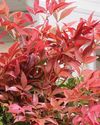
The Gardener
The Princess and Obsession
It only takes two wonderful modern hybrids of old garden favourites to prepare a garden and containers for an unforgettable spring performance.
1 mins
July/August 2025
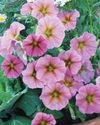
The Gardener
Pink and pretty
Pink colour shifters with hot appeal...
2 mins
July/August 2025

The Gardener
GROW the WALL
If you want lots of flowers in plantable concrete retaining wall blocks or lush stems and foliage cascading over dry stone walls, we have good plant suggestions for you!
5 mins
July/August 2025

The Gardener
Winter indoor plant care
Winter can be a tough time for your houseplants; a drop in natural light, drier air, and cold drafts can all influence their lush appeal. As plant lovers, spending more time indoors in winter creates opportunities to keep a close eye on your leafy companions and make some changes to avoid these common winter blues.
1 min
July/August 2025
Translate
Change font size

